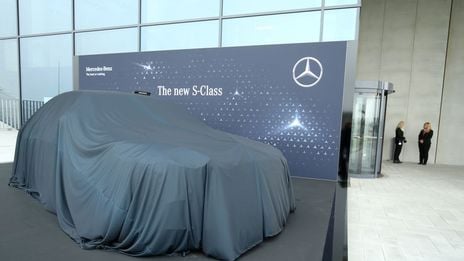STUTTGART (dpa-AFX) - The car manufacturer Mercedes-Benz has had a weaker start to the year than expected due to problems in the supply chains and model changes. In particular, the decline in sales of lucrative top models such as the S-Class weighed on profits in the first quarter. Only in the second half of the year should the sales mix shift back towards more expensive cars and thus provide a boost, as the Stuttgart-based company said on Tuesday. Nevertheless, the management around CEO Ola Källenius saw no reason to deviate from the annual forecasts. The share price fell slightly beforehand.
On the Tradegate trading platform, it fell by 1.1 percent compared to the Xetra close of the previous evening. Analyst Tom Narayan from the Canadian bank RBC said that the profitability of the passenger car division was well below the average analysts' expectations. However, large professional investors are likely to have already expected this, which is why the negative reaction of the share should be limited. The statements on the outlook are reassuring, stated UBS expert Patrick Hummel with regard to the share price reaction.
So far this year, Mercedes shares have enjoyed a significant upswing after looking rather bleak in the second half of 2023. In particular, Mercedes' new approach to share buybacks gave investors cause for optimism in February. However, the share price did not sustainably exceed the level of 75 euros.
Chief Financial Officer Harald Wilhelm spoke of a "challenging quarter" in an analysts' conference. Turnover in the first quarter of the year fell by 4.4 percent to 35.9 billion euros. Earnings before interest and taxes even fell by almost 30 percent to 3.86 billion euros. In the most important division with passenger cars, the operating profit margin before interest and taxes adjusted for special effects slipped surprisingly sharply by 5.8 percentage points to 9.0 percent.
The management around CEO Källenius had already warned of a weak start. The decline in sales and model changes in the lucrative top segment had a negative impact. Mercedes sold 462,978 cars in the first three months, 8 percent less than a year earlier, mainly due to a sluggish run in Asia.
Price penetration remained at a high level. However, because Mercedes is renewing the G-Class SUVs as well as the E-Class and the GLC compact SUV under the AMG tuning sub-brand, fewer expensive cars were sold. In addition, supply bottlenecks with 48-volt batteries, for which Mercedes had already held out the prospect of improvement, had a negative impact. However, the overall sales level in the first quarter was said to have reached its low point.
The strong result for vans could not fully compensate for the weakness in the passenger car segment. Although the van division is still booming, it contributes comparatively little to the Group's operating result due to its size. Mercedes has already predicted a weaker development for the Sprinter and Co. business over the course of the year. The first quarter offers a comfortable cushion in this respect.
At the bottom line, Mercedes posted a consolidated profit of 3.03 billion euros, around a quarter less. The car manufacturer confirmed its annual forecasts. There is still a certain amount of uncertainty, according to the Dax group. The current delivery bottlenecks for the GLC and E-Class models in the passenger car segment are easing and further improvements are expected. The overall mood in Europe remains unchanged, while availability in China is expected to improve, especially for the E-Class.
However, the overall Chinese market is currently being viewed with caution. In the USA, on the other hand, there is solid momentum in sales and demand./men/nas/zb









